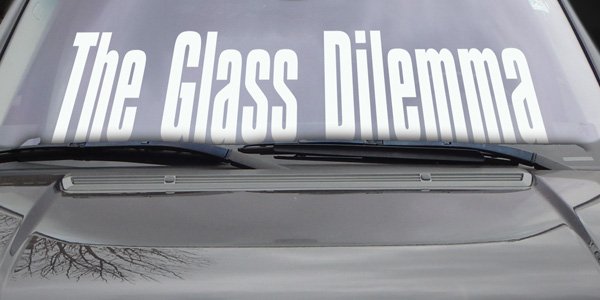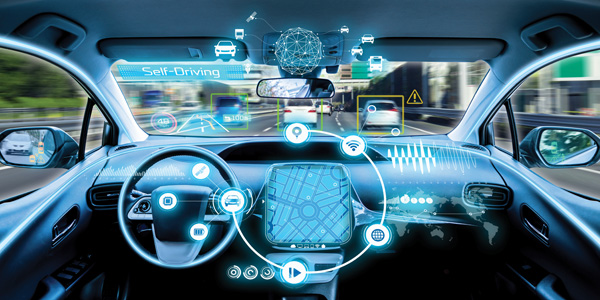
With all the developments in vehicles using new computers and sensors to either drive autonomously or assist driving, changes have come to all corners of the repair industry. Mechanical shops, body shops and the auto glass replacement industry have all been affected. The fact is the entire auto industry has seen dramatic changes in a very short time. Automobile repair has taken a completely new path. In many ways, it’s confusing for all in this crazy industry. The changes affect every one of us, not just you.
Auto Glass
The auto glass industry is going through some wild changes too. Advanced driver-assist systems or ADAS have thrown the industry for a loop. Recalibrating cameras mounted to or using the windshield as a lens is very different to a service group that has never needed a scan tool, much less new target boards. To say the least, repairers are scrambling to figure out the best options for this particular service. Whether you do your own glass, sublet or farm out, you need to know some important particulars before releasing that vehicle.
Note: The requirements for a windshield recalibration are not based solely on if the device was unplugged or not during glass R&I or replacement. It involves the changing or repositioning of brackets and components used to sense roadway issues or dangers. Sensors not positioned correctly can severely limit or stop a reaction of the vehicle to danger. So just because you did not disconnect the wiring plug doesn’t mean you won’t have to do a recalibration.
Here are questions you need answers to:
- Is the vehicle equipped with ADAS?
- Does the vehicle require a recalibration after a windshield R&I or replacement?
- What are the recalibration requirements?
- Do you have the proper equipment?
- Who is responsible?
Recalibrations
We’re all familiar with plugging in a scan tool and reading the computer for codes or diagnostic trouble codes (DTCs). When these codes are found during a computer scan, we address the code and repair the problem. Sounds simple enough. I know there is more to it but briefly, that is the procedure.
What do you know about recalibrations? This is a completely different category than scanning. It does require a scan tool and plugging into the on-board diagnostic (OBD) plug. What happens next is seriously different than a scan. Now we must access the control modules affected by the repair procedure. We’ll follow the procedures to recalibrate all sensors to document that they work properly and are aimed correctly.
Two Types
There are two types of recalibration that may be required after camera removal or displacement during windshield R&I or replacement.
Static recalibration. This is a recalibration using a scan tool to access the computer and start a diagnostic program. The program will check all communication parameters. The camera will be accessed during this program, and a series of pictures and alignments will be done using target boards. These target boards will have specific placements in relation to the vehicle. The dynamics of these placements are critical to the proper operation of the system. Incorrectly placed targets can lead to a catastrophic failure and jeopardize the safety of the passengers and others on the road. The automatic emergency braking system as well as lane departure and crash avoidance use the camera extensively. If the measurements are off, a collision that that system was designed to prevent may occur.
The target boards have specific designs for the computer to recognize. The angle perceived is also critical. The vehicle must recognize the danger soon enough to react; if it’s off, the timing of the reaction will be affected. Vehicle tire pressure, amount of fuel, and the lighting in the shop level surface are all factors that may have to be considered before recalibration begins. Once complete, the scan tool will notify you of a successful recalibration
Dynamic recalibration. This will require a scan tool to access specific control modules of the ADAS. The test will require a road test that may require two technicians to perform. This road test will have some specific requirements:
- Distance traveled
- Speed requirements
- Roadway such as lines and signs
- Weather conditions
Once complete, the scan tool will notify you of a successful completion.
Combination test. This will require a static test, first followed by a dynamic test.
Self-calibration. This is where a vehicle will do the recalibration internally. Normally found on vehicles that have warning systems such as lights, sounds or vibrations to perceive danger, these are referred to as passive ADAS. Active ADAS has features that actually steer, brake or stop the vehicle when danger is perceived with no input from the driver.
Body Shops
Check out this scenario: A vehicle is in your shop, and the windshield requires replacement. Are your estimators looking for or factoring in recalibration issues? The glass company you hired to replace the windshield is more than likely putting that issue on you and your shop. Does the glass company know it needs recalibration? Did they tell you it did? As with most shops, the glass installation is the last item done before delivery. Not planning or scheduling may have just delayed that delivery by days. This depends on if you can do the procedure in-house or have to schedule it at the dealer.
Glass Dilemma
So how does a glass company offering mobile service deal with recalibration? There is no answer to this question as of yet. The auto body industry is struggling with scan tools, and the auto glass industry is struggling too. Doing mobile recalibrations at a customer’s home would be a difficult process at best, as many parameters must be met. Remember that if the targets are set wrong, you can set a recalibration to the wrong specs. This would create a tremendous liability to the glass company.
Currently, most recalibrations are brought to the equipment and controlled environment in a designated shop. So where does this put the future of mobile auto glass replacement? We’ll have to see. What about for shops? Is the equipment mobile enough to bring to your shop? Do you have the room or correct environment? Will you need to find a company or dealer to do the recalibration? All these issues are new ones for body shops to consider.
Another Dilemma
Due to vehicle requirements, many shops are required to use dealer glass when replacing windshields. There is a good reason for this requirement, and it does not involve selling parts.
A scan tool doing a recalibration will notify you if it was successful or unsuccessful. If unsuccessful, the scan tool will not identify the reason directly. The technician performing the recalibration will have to go through a process of elimination. The most common culprit would be the glass, because there are some differences in tolerances between aftermarket and OE glass.

The Insurance Institute for Highway Traffic Safety has done some clarification on the glass differences. In their studies commissioned by universities, it was found that there was no difference in quality between OE and aftermarket glass. There was, however, a difference in the tolerance of brackets or mountings that hold the camera, as well as some frit issues. Frit is the black band around the edge of the glass and around camera locations. Slight differences altered the ability of the cameras to recalibrate and function correctly. When a recalibration fails, it has been my experience that it has something to do with the mounting hardware, not the glass.
The Cost Dilemma
With OE glass recommended for replacement versus aftermarket glass, the added time and cost to recalibrate a windshield has many concerned with how quickly the cost of replacing a windshield is increasing. Many glass companies are purchasing recalibration equipment to be able to do procedures with aftermarket glass versus sending to the dealer. Remember that some dealers will not perform the recalibration if dealer glass was not used in the replacement. The equipment to do so is not cheap. There are also many limitations as to when updates for new vehicles arrive. The cost to customers and to shops as well as the insurance industry has raised some serious concern. The number of vehicles that will be equipped with some form of ADAS is increasing every day.
Your Dilemma
Everything we do in the repair industry is changing. A simple bumper R&I, a taillight replacement or a windshield R&I or replacement may have an electronic requirement to complete the repair, whether it’s a scan or recalibration. The dilemma for us all is to identify and know what is needed, then find a way to finish the repair. The instructions are out there.
Remember that not everyone knows what you’ve learned today by reading this article. Make sure to have the instructions and educate all involved. Awareness by all will help to solve the dilemmas we face.














